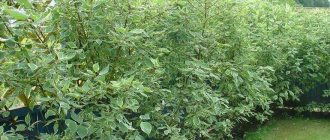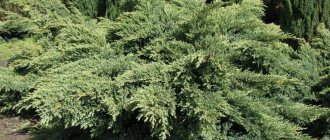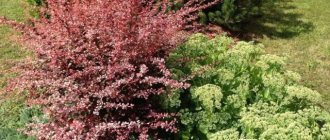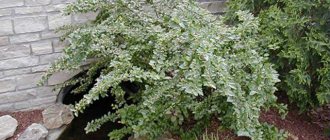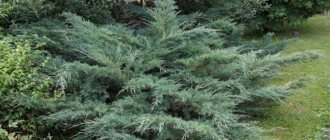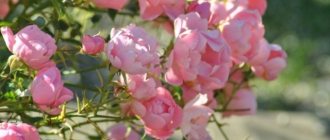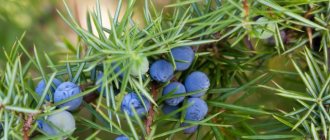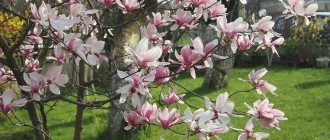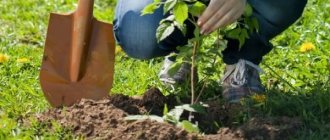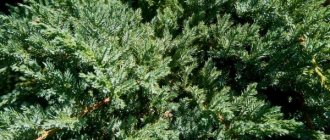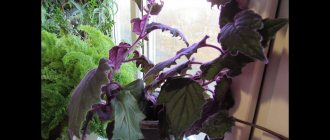Many people consider pruning junipers unnecessary. Others are afraid of damaging the bush. But juniper should be trimmed for health and decorative purposes. Juniper is an evergreen coniferous tree or shrub from the cypress family. Particularly common in mountainous regions. Leaves are scaly or needle-shaped.
It is important to prune correctly and not get carried away with it. The shrub has a plastic crown, which allows you to give the plant a certain shape during the pruning process.
The plant is grown for decorative purposes. The bush is evergreen and resistant to cold.
Is it necessary and possible to trim various varieties of juniper?
Depending on the variety, juniper can form the crown in different ways. Therefore, when choosing a variety, it is important to clarify in advance where it is planned to be planted and what formation is expected. For example, the Chinese Blue Point plant can be formed into a ball or pillow in water. And Hibernica is perfect for shaping into a cylinder.
Hibernica in the form of columns
It is necessary to trim juniper of any variety. But the goals of rejuvenation can be different - to improve the health of the bush, to make it more decorative, getting rid of unnecessary shoots. But pruning is needed in any case, because it helps renew the bush.
Some designers believe that juniper should not be pruned, because then the natural shape of the plant will be preserved. This usually applies to creeping varieties. But it is still necessary to cut off shoots that are diseased or damaged, otherwise there is a risk of death of the entire plant. Also, a little intervention is needed for columnar varieties. Usually they only cut off what has gone beyond the crown shape.
Features of cutting junipers of different types
Some types of juniper have a predisposition to form a crown in one way or another. Therefore, when choosing a variety for planting, it is advisable to know in advance where it will grow and in what form it will be formed. For example, Chinese Blue Point or Kuriwao Gold can be used to shape the crown into a ball, flattened sphere or cushion shape by trimming. Rock juniper Wichita Blue is suitable for forming a crown in the shape of a cube, and Hibernica for a cylinder.
Some landscape designers prefer not to prune the juniper, maintaining the natural shape of its crown. This applies, first of all, to creeping varieties. However, even such species from time to time need to undergo a sanitary inspection and remove damaged and diseased shoots. Columnar juniper varieties also require minimal intervention. As a rule, only the annual growth that extends beyond the lateral dimensions of the crown is pruned.
Deadlines
Typically, pruning of junipers is carried out several times a year, it is done in the spring in April or May, then in the fall in August and September.
But it is not recommended to do this after September; there is a risk of weakening the plant before the onset of frost. The bush has good frost resistance, but pruning before winter can cause the death of shoots or the bush. Also, you should not prune in hot weather in July - the heat greatly weakens the bushes.
For pruning, it is recommended to choose a cloudy and cool day (especially in August).
Sanitary pruning
This type of procedure is performed on all types and varieties of juniper. It is recommended to remove branches damaged in winter in the spring. Sunburned needles can recover, so such shoots should be left and their condition monitored. As a last resort, remove it in the fall.
During the summer, bushes infected with diseases or pests will need sanitary trimming. In most cases, such branches are removed immediately to prevent the damaging factor from spreading throughout the plant. In the fall, inspect the juniper for the presence of broken, outdated, dried branches, which are also cut off.
During the summer, bushes infected with diseases or pests will need sanitary trimming.
Attention is especially required for creeping species with a densely packed crown. Thickness often provokes the development of fungal diseases. If you leave dry, dead parts among the branches, an infection center will appear on the juniper that can spread to the entire bush.
What tool is needed, preparation
Before cutting, the bushes need to be sprayed with water. For trimming we will need the following tools:
- hacksaw;
- garden shears with a long handle;
- lopper;
- pruner
Trimming juniper with a hedge trimmer:
Tools must first be washed and sharpened. Dirt can get inside the plant through the wound and this will lead to disease. It is necessary to disinfect the cutting surface before starting work (alcohol is suitable for this).
Remember, the sharper the tools, the smoother the cuts will be, and the faster the wounds will heal. Or vice versa - a torn and uneven wound will heal for a long time and can contribute to the appearance of plant disease.
We also use personal protective equipment – overalls and gloves. The plant's resin is very sticky and is not easy to get rid of. In addition, it may contain toxins that, once in the wound, cause irritation. Only common juniper is not poisonous, so the formation of this plant is completely safe. The most poisonous is Cossack, you need to be careful with it, there are a lot of toxins in the poison, they can cause irritation even if they usually come into contact with the skin.
When cutting Cossack juniper, you need to wear gloves and overalls. It is also recommended to wear a mask to protect your respiratory tract. If Cossack juniper juice does get on your skin, wash it off with cold water or use laundry soap. A burn may form on the affected area, but it will go away quickly. But try to avoid getting the poison on your mucous membranes, it is very dangerous.
After completing the procedure, you need to wash the instruments and get rid of the sticky resin. The following will help us:
- alcohol;
- detergent;
- organic solvent.
After washing the instrument, you need to dry it. If reuse is required, disinfection will have to be carried out again.
Formation of the crown of Cossack juniper
When creating a specific shape, you should use a template that will allow you to get a pyramid, ball or perfect circle. There is also a beautiful spiral and arch coming out of the bush.
The most difficult thing is to give the appearance of an animal or people, but it looks the most impressive. First give the basic shape:
- ball;
- triangle;
- square.
It is from them that figures are formed, gradually cutting off the Cossack juniper and giving it an outline. The haircut is carried out along the guide line of a pre-made template design.
Formation is carried out in autumn and spring. The growth of the bush is instantly restored and the needles become lush. When activities are carried out in the fall, the Cossack juniper remains bare until spring.
In order not to cut off excess, trimming is carried out slowly
How to prune and shape juniper depending on your goals
There are several types of pruning. Each of them has a specific goal and, depending on this, our actions will differ. The formation is as follows:
- Sanitary.
- Thinning.
- Formative.
Spot method
A part of the shoot is removed and it is fixed in such a way that it will grow onto a pre-selected bud. This method is usually chosen for young and small juniper bushes. This will help to correctly form the skeleton of the bush.
Young plant
Blind way
Large garden shears are used for cutting. The method is suitable for junipers whose crown has formed at night, but it is necessary to adhere to certain dimensions of the plant. The blind method will also allow you to trim so that the bush is in the shape of a geometric figure.
Blind trimming
Sanitary pruning
The purpose of sanitary pruning is to improve the health of the bush. But it is also needed to avoid diseases, especially when the plant is young. It is done twice a year. The first is in the spring, as soon as the snow has melted. Frozen and damaged branches are pruned. It is very simple to identify a shrub for the presence of damaged shoots - we will hear the characteristic smell of pine needles. A small amount of resin can also be seen.
In the fall, re-shaping is carried out. Here you need to pay attention to diseased and crooked branches. Sometimes sanitary pruning needs to be done unplanned, that is, after damage or illness.
Creeping juniper has a very branched crown and grows very quickly. A point cut of juniper is suitable for it. Each shoot is shortened separately. This helps to form the bush correctly. The shoots are cut by a third.
Kozatsky is also growing quickly. Everything that looks unnecessary is cut off. It tolerates haircuts well, but it must be started at the age of two. Sections are made lengthwise, since transverse ones worsen the appearance.
Thinning formation
This method of pruning will allow you to get rid of unnecessary density in the crown, the plant will free up space inside the bushes. Typically thinning pruning is done in the spring or summer. It is necessary to remove shoots that grow inward, get rid of small trunks, and remove forks that could cause the bush to break. The purpose of this shaping is to improve air flow into the interior of the plant and evaporate moisture that can accumulate in dense areas. This will help avoid the formation of fungus and mold on the bush.
Formative pruning
The ornamental shrub grows very quickly. Because of this, the appearance deteriorates. The purpose of formative pruning is to limit active growth and give the plant a beautiful appearance. Typically, shortening is performed annually. About 20% of the mass is removed. Shoots that extend beyond the already formed crown are also pruned. You can fix it using several large branches, and remove all unnecessary shoots.
As soon as we finish cutting, we need to take more careful care of the plant. We spray the bushes with a growth stimulator to avoid plant stress. This will allow it to recover faster and damaged shoots to begin regeneration. The cuts that remain after trimming the branches do not need to be covered.
Forming and cutting juniper
Methods and types of pruning in summer, autumn and spring
There are several types of juniper pruning, each of which is performed according to a clear algorithm, at a specific time of year and has a specific purpose. As a rule, crop cutting activities are carried out in the spring, from mid-April to the end of May, or in the fall - in September-October. Regardless of the season, the procedure is carried out on a cloudy, cool day, first the day before, moistening the crown of the bush with moisture using the sprinkling method.
Important! It is very important to trim branches with sharpened and disinfected tools. An even and neat cut “heals faster” and is less susceptible to various infections and bacteria.
Pruning of the described perennial is carried out using two methods:
- Precisely . This method allows you to preserve the natural shape of the bush. It makes the crown thick and dense, suitable for young specimens. During the procedure, each branch is cut at an angle of 45 degrees to one fully formed bud, 2 cm above it.
- Blindly . This haircut makes it possible to give the crop any desired shape. In this case, young shoots are completely removed, and all others are cut around the perimeter, regardless of the location of the buds.
Pinching juniper
When forming the desired type of perennial, gardeners practice pinching growing shoots. As long as the young branch has not become lignified and the needles continue to grow, the axillary buds do not lose their ability to form perfectly for the formation of a shoot in the second year. This way there is a chance to get branches of the desired size, stimulate or, conversely, slow down the growth of shoots in the required direction.
Did you know? The oldest juniper today grows on the territory of the Crimean peninsula. According to some sources, its age is 400 years, but many scientists claim that it reaches 2000 years. It is extremely difficult to accurately determine the age of a living plant.
It is especially successful to use the technique of pinching shoots if it is necessary to change the shape of a young bush. By removing or making smaller the most powerful and strong branches, you can get a stronger plant than it would have grown without outside intervention. The simplest method of pinching is to completely pinch the ends of growing branches or trim off the awakening central buds.
But it should be noted that the pinching procedure is quite labor-intensive and ineffective if the number of shoots on the juniper is too large. That is why the classic shaping haircut is more suitable for the described type of plant.
It is advisable to carry out activities in early spring before the buds begin to bloom. In this case, all shoots are pinched, which makes it possible to further intensify the development of not just one large shoot, but numerous short branches. Such manipulations make it possible to form dense, dense and compact shrubs with an even and regular crown shape.
Thinning pruning
Thinning shrub trimming is necessary in order to make the crown less thick and dense. High density is fraught with the development of various pathogenic microorganisms and harmful microflora. Strongly growing varieties of junipers are suitable for thinning pruning. During the procedure, shoots growing deep into the bush are removed, as well as “forks” that can lead to the breaking of the plant.
We recommend finding out why juniper turns yellow and what to do.
This type of pruning has a number of positive qualities:
- improves air exchange inside the crown;
- removes excess moisture;
- prevents the formation of fungal infections and the appearance of pests.
The optimal time to trim a perennial is early spring or the last ten days of August.
Sanitary pruning
Sanitary pruning is done to restore and improve the health of the plant, as well as to prevent various ailments and parasites. As a rule, it is carried out in early spring until the sap flow phase begins. During this period, broken, too weak, damaged, diseased shoots are removed. It is recommended to leave branches that have received burns from direct rays of the sun, systematically throughout the growing season, checking their condition. If the shoots do not recover, then they should also be removed in the fall.
During the summer period, the plant will need sanitary pruning if it becomes infected with fungal diseases. Diseased shoots are completely cut off to prevent the spread of the disease to healthy tissues. In the fall, if there are broken, dried or outdated branches on the bush, they are also pruned.
Particular attention should be paid to the types of junipers that spread along the surface of the soil and have a thick, dense crown. Quite often, dense plantings become an excellent source of fungal development. If dried or weak shoots are left on the bush, an infectious outbreak may arise, which, spreading, can destroy the entire crop.
Formative
Most juniper varieties belong to the category of rapidly growing plants, so pruning measures are aimed largely at inhibiting the active growth of shoots and creating an attractive, neat bush shape. There are varieties of the crop that grow slowly, so in this case, formative pruning allows gardeners to get a decorative figured shrub that does not require regular adjustments to its shape. There are several main types of shaping haircuts, the features of each of them - find out below.
Important! Regardless of the type of pruning, you cannot remove more than 1/3 of the above-ground part of the plant in one procedure.
Topiary
Topiary trimming is carried out by gardeners at their discretion if the natural shape of the shrub has lost its geometry, regularity or symmetry, or if you want to give the plant an original unusual shape. However, when talking about giving the tree “any” shape, it should be clarified that it should correspond as much as possible to the natural one, otherwise the perennial may become stressed and, as a result, be subject to various ailments. For example, you should not try to make a spiral-shaped crown from a squat shrub that creeps along the soil.
The shape of a juniper haircut should be selected based on several important aspects:
- Variety . For forming a ball or other similar shapes, varieties such as Kuriwao Gold, Blue Point are suitable. The cube and freeform shapes can be created from the same perennial varieties as the ball, as well as from Wichita Blue rock shrub. Junipers Skyrocket, Wichita Blue, and the common Compressa make amazing pyramidal, spiral, cone and chess pieces. The cylindrical shape can be obtained from Meyer, Hibernica and Chinese Spartan.
- Skeletal structure of the bush. From the entire mass of shoots, it is necessary to choose those that are located correctly, in accordance with the desired shape. The rest should be shortened or cut off completely, while leaving those branches that grow upward. In subsequent years, only young shoots need to be shortened, and no more than 25% of the total growth. This is how horizontal, Cossack and rock varieties of juniper are cut. Ordinary does not need annual shaping. To increase the density of its crown, it is enough to carry out superficial pruning of young shoots.
- Gardener experience. Another factor that matters when pruning is the experience of the gardener. If cutting is being done for the first time, then you must first form the shape of the bush as close as possible to the natural one, for example, a cube or a ball. If the desired figure has ribs, then experts recommend using special templates. After simple forms have been fully mastered by the gardener, you can move on to creating more complex, three-dimensional figures.
Video: juniper topiary haircut
Experts recommend carrying out shrub formation activities in the spring, from April to May, or in the fall, until the end of October. It is not recommended to prune shoots from June to July, when the plant is at its peak sap flow.
Important! The shrub tolerates pruning normally, however, so that it can quickly regain its strength, it is recommended to spray the crown with any growth stimulant, for example, Epin or Emistim.
Spiral
A spiral haircut is more complex than a simple topiary haircut. First of all, it begins with the formation of a cone or column, which subsequently needs to be turned into spiral turns. To make it easier to create spiral-shaped turns, their lines are marked on the bush using wide floral tape or acrylic-based paint. The number of turns can be different, however, as practice shows, three- or five-turn figures look most impressive. After the markings have been set, you can create a spiral: first, make a rough cut of the contour along the tape using pruning shears, and then use scissors to form the final desired look.
Depending on the width of the contour, which determines the interval between turns, the spiral is divided into two types:
- spindle - with a large contour;
- corkscrew - with the same width of turns.
Trimming juniper is allowed in spring or autumn. But you should pay attention to the fact that the first pruning should be carried out no earlier than two years after planting the seedling in a permanent place.
Curly haircut
Curly haircut is the most complex and time-consuming of all, since it requires certain skills and experience from the gardener. First, experts recommend practicing creating simple geometric shapes: cube, ball, cone. Next, having “get your hands on”, you can move on to forming more complex figures in the form of animals, people, and decorative items.
Did you know? Juniper wood is considered one of the best materials for woodworkers and carvers. The dried raw material never cracks, has extremely high strength and allows for very fine carvings.
To make the task easier, it is recommended to use special patterns when carrying out a curly haircut. If the bush that is planned to be pruned is not young, then immediately before the procedure it is necessary to carry out anti-aging pruning.
Additional tips, cautions
Shaping juniper is very interesting, but also difficult. It is best to start shaping with simple shapes - squares or cubes. And after gaining the necessary experience, you can form bushes in the form of more complex geometric shapes. Over time, you can even learn how to make bushes in the shape of flowers or animals.
There are tips that will help you perform the correct pruning, with virtually no mistakes:
- If the shoot grows upward, it needs to be cut to the outer bud. If downwards - on the inside.
- The cuts are made at an angle of 45 degrees.
- When cutting a branch, be sure to leave a stump of up to 2 cm.
- Plan everything you will do in advance. Conifers grow slowly, and if you make a mistake, it will take a long time to correct it.
- If you're not sure you can trim properly, try removing only a small amount of the mass.
- Remember that you can remove no more than 20 percent of the growth.
Note! If you brought juniper from the forest, it may be difficult to root, even if you followed all the rules of care. In addition, in some places the plant is protected by law, because it will only be possible to breed a new one over a long period of time. Therefore, to take juniper, you need to visit a nursery. With proper care, such a plant quickly takes root and within a couple of years it will be necessary to carry out the first shaping for decoration.
If you trim junipers frequently, you will learn to do it correctly fairly quickly. The bushes tolerate this procedure well, but do not overdo it, as this can put the plant under severe stress. A beautifully pruned bush will become the highlight of your garden.
Shaping haircut
When carrying out topiary pruning, it is necessary to take into account the natural structure of the skeletal branches of the juniper.
The ability to grow in different directions and the growth rate of coniferous species depend on the varietal. There are varieties that grow slowly, so with the help of formative (topiary) pruning on a personal plot, you can get a decorative figured element that does not require constant adjustment of the shape.
As a result of the procedure, if the skeleton of the branches allows, the juniper grows in the form of a tree, a creeping shrub, or a ball on a stalk. In the latter case, you can use the grafting of a spherical hybrid onto the trunk of the rootstock, then pruning allows you to maintain the shape in perfect condition. The culture is suitable for creating a hedge.
When carrying out topiary pruning, it is necessary to take into account the natural structure of the skeletal branches of the juniper. It will not be possible to make an elegant spiral from a bush creeping along the ground, or a cushion-shaped crown from a tall tree. For beginners, when cutting juniper, it is recommended to use templates to get a ball, circle or pyramid. Later you can try to make an arch, a berso, a spiral. The greatest difficulty is creating figures of people and animals from juniper.
On a note! When removing bare branches, they should be cut closer to the trunk. There are no growth buds, so later the stumps will simply dry out.
For the crown to form, the air temperature must be at least 4°C.
Treatment of the cut site with fungicides is required only if a trunk 1-2 cm thick is removed. After the disinfectant mixture, it is advisable to cover it with garden varnish or oil paint. Most varieties do not require precautions, but varieties susceptible to various diseases are recommended to be protected.
For Cossack juniper, pruning to form the crown does not need to be carried out; it is enough to remove dry, damaged branches. The species is poisonous and requires protection of hands from accidental wounds and cuts. Form varieties with a creeping crown as desired. For tall common juniper, drastic pruning is permissible when it is necessary to completely change the plant.
The rocky type of conifer does not need the procedure at all. And when performing an operation for a horizontal variety, you should act carefully, trying not to damage the main branches and stems. Otherwise, in addition to loss of decorativeness, damage to the shrub may occur.
It is recommended to remove branches damaged in winter in the spring.
Crown formation can be carried out in spring and autumn. The air temperature must be at least 4°C. The beginning of the growing season is considered more preferable, since diseased, dry, frozen branches are additionally removed. Along with the beginning of active growth, the bush quickly recovers, the crown becomes lush and dense. With the same measures in the fall, the plant will remain bare until spring.
Description of culture, growth characteristics
Juniper in some sources may be called heather; it is a representative of the cypress genus. This is the second most popular shrub, after cypress. It is known that the common coniferous bush has gained popularity due to its characteristics:
- Some species may have a prickly foliage part, while striking with unusual external beauty;
- In others, thin, obedient shoots are affected, which can not only spread in different directions. Often they can be formed into various shapes. At the same time, trimming juniper is a simple process.
Plants are also valued for their ease of propagation, because there are several methods, focusing on different preferences. Everyone can determine for themselves a simple and effective method of propagation that will allow them to successfully produce crops.
Reference. The plant is considered evergreen, long-lived, its height, depending on the species, can vary from 1.5 to 20 meters. The branch part may also differ: some are characterized by a scaly branch, others have straight needles.
There are tree-like bushes with a lush pyramidal or cone-like crown.
The culture is distinguished by the presence of unisexual flowers:
- Female - appear as greenish bumps;
- Male ones - look like earrings with 3 or 4 stamens.
Summer is the period for flowering, it most often begins in early June. Fruiting begins in August and ends in September. Juniper fruits are cone berries, often used in folk medicine. In nature, the crop grows in forested parts of the northern regions. But this does not prevent you from growing plants in suburban areas. Moreover, the bushes delight with their decorative effect, interesting coniferous smell and healing properties.
Landing rules
Successful cultivation of this crop depends on the quality of the seedling, compliance with the terms and rules of planting, and further care.
- The best time to plant conifers on a site is April-May or early September in regions with a temperate and warm climate.
- In areas with unstable weather and sudden temperature changes, it is recommended to carry out the procedure in the fall so that the plants have time to take root before the first frost.
Selection and preparation of seedlings
You can buy seedlings at a nursery or specialty store. It is better to take mature plants (2-3 years old) with a closed root system in an earthen coma or container.
The roots of this crop are very delicate; when open, they can dry out before transplanting to the site.
When choosing, carefully examine the condition of the ephedra. Healthy specimens have a live crown, needles of a uniform color, without signs of diseases or pests. The earthen lump does not contain mold or acidification.
Immediately before planting, the underground part of the seedlings is saturated with moisture so that they quickly take root in the new place.
Site and soil preparation
Coniferous crops like to grow in a shady place in the garden. It is planted under trees, near tall bushes, along a fence, walls of a house or outbuilding.
A site is selected with well-drained soil and deep groundwater, and must be protected from winds.
All types of creeping junipers prefer loamy or sandy soil.
- In the first case, a couple of buckets of sand and peat are added to the garden bed to improve the structure and make it looser and lighter.
- When planting on sandy loams, clay is added - 20-25 kg.
A horizontal plant does not grow well in acidic soil, so if necessary, it is deoxidized and this indicator is brought to the level of 5-6 units. To do this, use dolomite flour, chalk or slaked lime. After adding all the components in the fall, deep digging and leveling of the soil are carried out.
Landing technique
First, holes are prepared for planting - their depth and width should be 2-3 times the size of the earthen clod.
To improve the outflow of moisture, half a bucket of screenings mixed with crushed stone and pebbles is poured to the bottom, and fertile soil of turf, peat, pine sawdust and sand mixed in a ratio of 2:2:1:1 is added to the top. To avoid burning the roots, cover with a thin layer of garden soil.
They lower the roots, fill all the voids, compact them, water them with water - 10 liters is enough for one seedling.
When planting, it is important that the root collar remains above the surface of the ground, otherwise the trunk will quickly rot and the plant will die.
The scheme for group cultivation is as follows:
- distance between bushes - 2.5-3 m;
- row spacing - 2 m.
general characteristics
The height of an adult bush in a cultivated form varies from 1 to 1.5 m, in a natural environment it reaches 4 m. The shoots grow quickly and form dense thickets. The annual growth is 7-9 cm. The root system is rod-shaped;
The crown is spreading, dense, with a diameter of 1 to 3 m. It forms beautiful dark blue cones, 6-7 mm in diameter. In young shrubs the needles are needle-shaped, erect, blue-green in color, in adults they are scale-like.
The plant thins out its rich pine aroma when the needles are rubbed.
Growing regions
In the wild, this conifer can be found on hillsides, sandy shores of lakes and rivers.
In its cultivated form, the evergreen plant is grown in the Moscow region, Moscow region, in the Central and Middle zones, as well as in the south.
Gardeners' tips for cutting and shaping Cossack juniper
In order to minimize stress for the plant during pruning, it is recommended to adhere to some general recommendations that are suitable for almost all varieties of juniper:
- It is better to cut a little less than to damage the branches by cutting too deep - this is one of the most important rules that applies not only to coniferous plants. It is necessary to remove shoots and sprout buds only after the shape of the bush has been carefully considered. If you cut off a large number of buds, this can negatively affect the development of the bush - it will slow down or completely stop its growth. Sometimes too intense pruning leads to the death of the plant.
- The bare branches of the Cossack juniper, from which the needles have fallen off, do not have dormant buds, as is the case with most deciduous crops. They will not be covered with needles again, so such branches are cut “to the ring” - completely, right to the base, or a very small stump is left. If this is not done, the exposed shoot will dry out over time and will spoil the appearance of the juniper.
- You cannot cut more than 1/3 of the total volume of green mass at one time. Otherwise, the bush may weaken and will not have time to recover before the onset of winter. This is especially true for varieties with slow growth rates - significant “bald spots” will be noticeable on them, which will heal only after a few seasons.
- Cuts should be made at an angle of 45°C. If you cut the branches across, the bush will heal slowly.
- To give the shrub a neater appearance after pruning, it is recommended to cut the shoots to the nearest fork, and not just the ends.
- For better healing of the branches, all cuts must be disinfected. Most often, for this purpose they are treated with garden varnish.
- Garden pruning tools must be well sharpened. Dull scissors “chew” the ends of branches, resulting in sloppy and stringy cuts. After such pruning, the shoots take a long time to heal. In addition, pruning with a blunt instrument increases the risk of infection of the juniper.
- All tools for working with shrubs must be disinfected. To do this, they can be wiped with a weak solution of potassium permanganate.
- For greater crown density, the shrub is cut along the young growth.
- Shortly before cutting, you should feed the juniper with mineral fertilizers. The plant responds especially well to nitrogen fertilizers, which help the bush gain green mass. After pruning, the bush is also fed, but moderately.
- In order to stimulate crown growth, you can spray Cossack juniper with Epin solution.
Advice! After cutting any plant, waste remains - branches about 8-12 cm. They can be used as cuttings and propagated juniper. Smaller branches can be dried and mulched around the bush with them.
You can learn more about how to prune Cossack juniper from the video below:
Brief information about the variety
- Color : blue-green.
- Height : 1-1.5 m.
- Diameter : from 1 to 3 m.
- Regions of growth : southern zone, Moscow region and Moscow region, Middle and Central zone.
- Planting features : loves a shaded place on the site, planting pattern - 2.5-3x2 m.
- Immunity : good winter hardiness from three years and high endurance against diseases.
- Life expectancy : no information.
Tools and protective equipment
Conifers have interesting and unique properties, one of which is toxicity. Juniper is exactly the plant whose essential oil can negatively affect the human body. If you are going to cut the “Cossack” variety, you must use gloves so as not to harm the skin. You need to remember that the resin cannot be washed off it, which means a protective suit or a change of clothes is simply necessary. Pruning juniper in the spring is done with well-sharpened pruning shears. During the process, it needs to be regularly wiped clean of resin in order for it to function properly.
Do-it-yourself cutting of conifers: thuja hedge
thuja (Thuja occidentalis) is most suitable for the “northern” garden . This is a relatively inexpensive and truly universal material for both hedges and topiaries. A huge number of varieties of this species, varied in crown shape and needle color, allows you to create trimmed figures and hedges not only of different heights and shapes, but also of different colors.
To create tall hedges from coniferous plants, trimmed spiral columns and column-tiers, dense varieties are used, such as:
Read also: The benefits of walnuts for women
For compositions of medium height, the following are perfect:
Pruning Cossack juniper is necessary, first of all, in order to maintain the attractive appearance of the shrub; however, lack of care has virtually no effect on the development of the plant. The variety is one of the most unpretentious representatives of its family and is characterized by high drought resistance. The immunity of the Cossack juniper to air pollution is especially highly valued in landscape design - this characteristic allows the shrub to be used to decorate city parks, alleys and playgrounds.
Landscape use
Juniper is one of the most popular crops in the design of unusual and original garden compositions.
The rapidly growing plant densely covers any surface, making it rich, bright, and is not afraid of gas contamination.
- It is used in single and group plantings, planted in a flower bed, near a gazebo, or terrace;
- Grown in combination with other medium-sized and tall conifers;
- Placed in the center of a living composition surrounded by perennial bright-blooming roses and hydrangeas;
- A horizontal bush looks beautiful in a mixborder with mosses and heather;
- Tolerates the proximity of decorative deciduous flowers and cereals well.
Juniper horizontal in garden design.
Juniper horizontal Blue Chip care / Juniper planting and care / conifers
Juniper horizontal. How to reproduce?!
